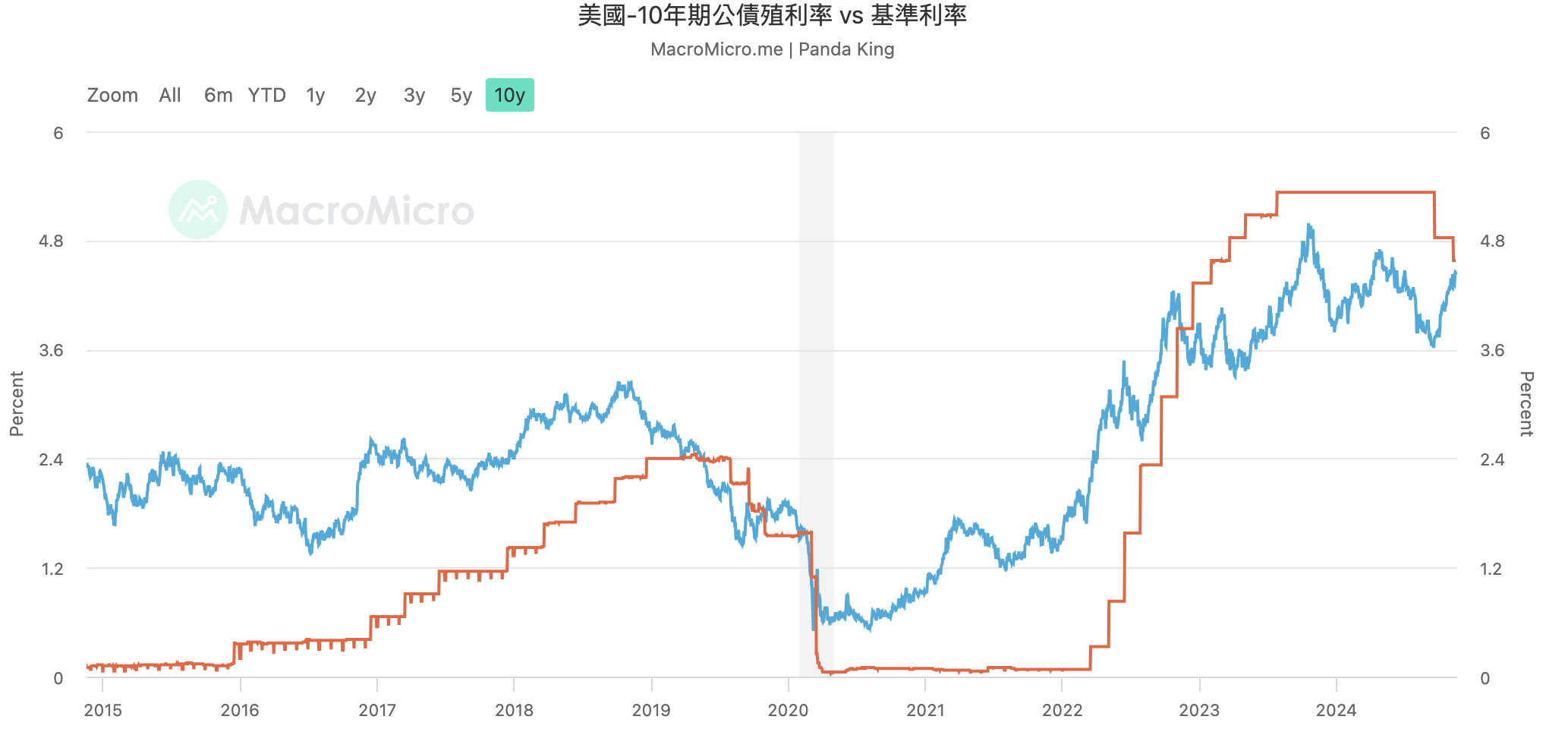The U.S. Federal Reserve (Fed) announced a 2-basis point rate cut in September, lowering the interest rate to 4.75% to 5%, marking the first rate cut since 2020. In November, the Fed announced another 1-basis point cut, lowering the interest rate to 4.5% to 4.75%, continuing the new round of rate cuts.
U.S. Treasury Prices Decline Instead of Rising
However, after the Fed officially launched the rate cut cycle in September, U.S. Treasury prices did not rise as expected. In addition to the fact that long-term U.S. Treasuries had already surged in anticipation of the positive news, experts analyze that other possible reasons include:
- The U.S. Treasury Department's continuous issuance of debt to fill the government's budget deficit (if Trump returns to the White House, the U.S. fiscal deficit is expected to increase further)
- The Fed's attempt to reduce its balance sheet, eliminating a large amount of demand for government debt purchases
- Recent economic data shows that the fight against inflation is still stagnant
Morgan Stanley: Predicts U.S. 10-Year Treasury Yield to Drop to 3.75%
However, according to a recent report in The Wall Street Journal, the U.S. financial institution Morgan Stanley recently released a 2025 global strategy outlook report. In the report, Morgan Stanley analysts predict:
By mid-2025, the U.S. 10-year Treasury yield is expected to decline to 3.75%, and slightly above 3.5% by the end of next year. The Fed is expected to cut rates by 75 basis points (3 basis points) in the first half of 2025.
According to data from MacroMicro showing, the latest yield on the 10-year U.S. Treasury is 4.44%. Since the U.S. Treasury yield has continued to rise after the Fed's rate cut in September, it indicates that the market expects the Fed's rate cut pace to slow down. However, Morgan Stanley analysts predict that the 10-year U.S. Treasury yield will drop to 3.75% in 8 months, which raises the question of whether the bond market is about to see a bottom rebound, a point worth our continued attention.
The Fed's 64-Basis Point Rate Cut in December
According to a report by Bloomberg, Ed Al-Hussainy, a strategist at Columbia Threadneedle, stated:
The U.S. Treasury market is struggling to find direction, with too many uncertainties affecting the market.
Additionally, Fed Chair Powell released hawkish remarks on the 15th, stating that a gradual rate cut would be wise if economic data allows, causing the market's December rate cut forecast to present a 64-basis point wave.
According to the CME Fedwatch tool, the market expects a 38.1% probability of no rate cut in December, and a 61.9% probability of a 1-basis point rate cut, far from the 82.5% market forecast of a 1-basis point rate cut on the 14th.
Further Reading: Powell's Hawkish "No Hurry to Cut Rates" Causes Bitcoin to Plummet to $86,600, U.S. Stocks Crash, October PPI Data Shows Inflation Remains Sticky









